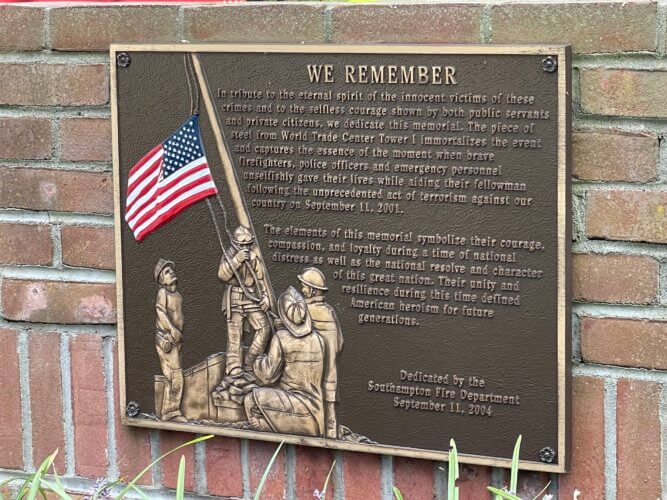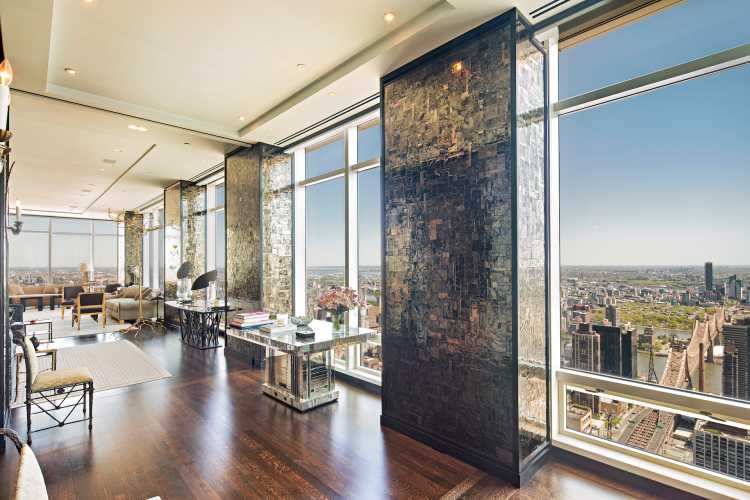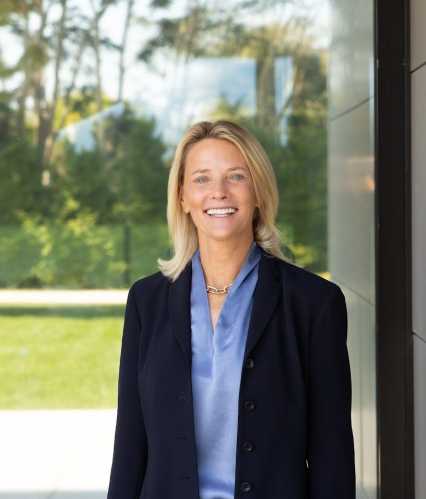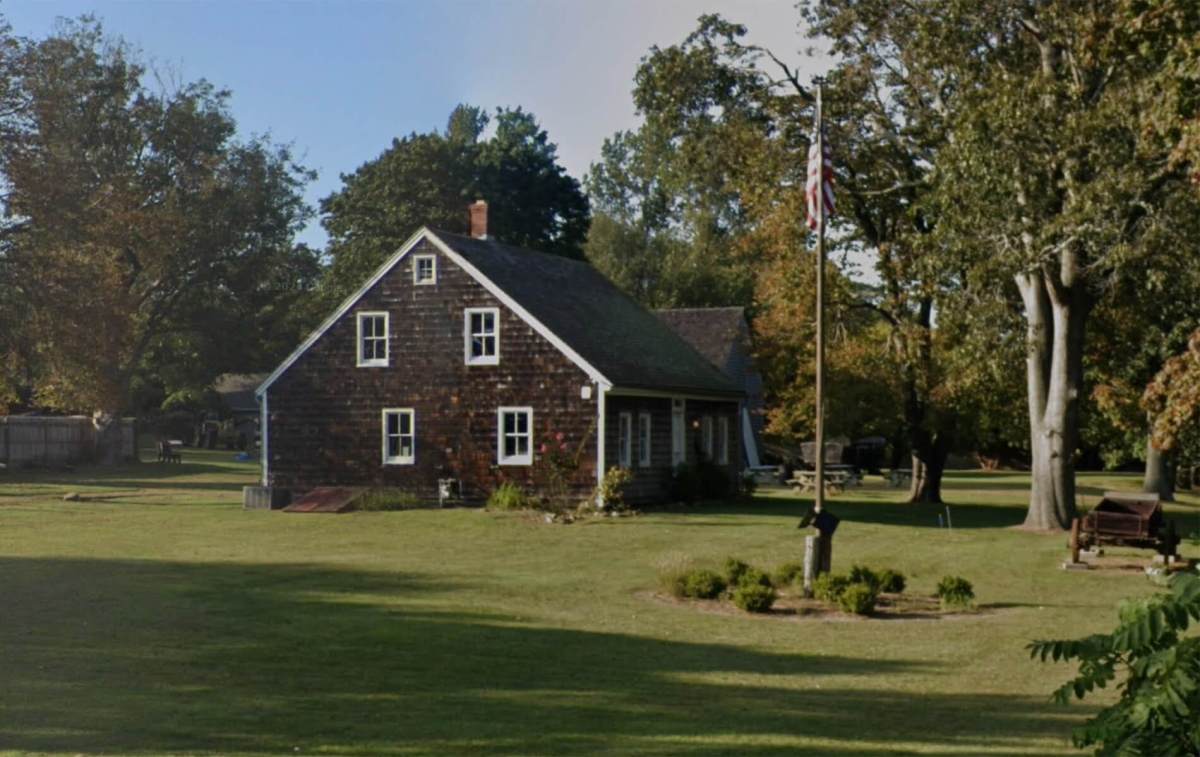“I can clearly remember standing in my living room with a coffee watching the news — exactly as it happened,” said real estate broker John Healey as he recalled the terror attack that took place 20 years ago today.
While he and his wife, Chris, had moved out of New York City two years earlier, his parents and sister lived there. His mother happened to be still visiting on that “bluebird day.”
A volunteer with the Bridgehampton Fire Department (he would go on to serve as chief), he understood the insurmountable challenges facing the New York City firefighters. “I was explaining to my mother and Chris about the aviation fuel, heat, fire, etc.,” he said. “I said there is no way the building would survive that because there was no way to extinguish at such a high level.”
The South Tower had fallen by 10 a.m. The North Tower came down 28 minutes later, leaving total devastation and a toxic plume around lower Manhattan.
Healey decided to go surf in Montauk. Several others were in the water. The conditions were perfect — “Offshore and clean,” as he described it.
“We could see the smoke drifting southeast out of Manhattan from Montauk,” he added. “I guess we all had our moment of digestion in the water.”
Then-New York City Mayor Rudolph Giuliani ordered an evacuation of Lower Manhattan. Those who survived, walked miles to get as far away from the area as they could. The transit system was shut down. Others waited in long lines to take ferries across the Hudson River to New Jersey.
That was the immediate exodus, but there was also a long-term one afoot. Many wanted out of the city altogether.
“Clients appeared in the weeks and months following,” said Healy, now with Sotheby’s International Realty. “More would have moved if remote work was a ‘thing.’ Technology wasn’t available like today. But people wanted to feel safe.”
“The tragedy impacted all New Yorkers and certainly, there was a bump in the Hamptons market that followed,” said Raymond Smith, the branch manager at Douglas Elliman Real Estate’s Southampton office.
“People were less comfortable living in the city. Many closed up their businesses and moved to places like the Hamptons or Florida,” Smith said. “On the East End, we saw an influx of people seeking sanctuary from the trauma and the fear of what happened in the city. People who had been renting became buyers and stayed here. I’ve been in real estate 42 years, and as we’ve seen recently during the pandemic, the Hamptons has often been a place of refuge and calm.”
J.B. D’Santos, an agent with Brown Harris Stevens, had dropped his children off at the Hampton Day School in Bridgehampton that morning. “At the end of that tragic day, our children shared with us what happened in their classrooms once they had learned what occurred — children crying, screaming for their parents, others wanting to go home,” he remembered. “The reason: multiple children had one of the parents flying somewhere that morning.
“Immediately thereafter, the number of children enrolled in our children’s classes basically doubled as families packed and moved to the East End of Long Island,” he said. “Many families with properties here hosted other family members and friends while they settled in and started looking for a home to buy or to rent.”
Agents were busy — D’Santos said there were one-third of the agents there are now — after what had been a slow period.
In 2001, the economy was in decline because of the collapse of the dot-com market. “Similar to what had happened in the late ‘80s, homes were just sitting on the market and not selling,” he explained. “So after 9/11, we agents did a lot of business, but there were no bidding wars. The inventory was there and that was enough for the demand. Still, many families rented while they would build their dream home.”

Mala Sander of Corcoran remembers the phone lines going quiet for two weeks after 9/11. Real estate was at a bit of a standstill while people focused on the news and what the terror attack would mean for the economy, she said.
“Remember the anthrax scares were happening at the same time,” she said. They began on September 18, one week after the terror attack. “Everyone was in a panic. But yes, the phones started ringing again as people woke up from their panicked stares and bolted from the city to the Hamptons.”
Sander had just started working in real estate in February 2001. She joined Allan M. Schneider Associates, which was one of the last large, locally owned real estate companies on the East End before it was absorbed into The Corcoran Group in 2006.
She recalled “an incredible finish to that year” that continued for several years to come. “I believe it was the beginning of the real estate boom with the banking industry aiding and abetting people that wanted to live a different dream, until the crash of 2008,” she added.
There were some young families who made the permanent move east. “They became a part of the community and everything got better as a result. Schools, shops, restaurants and culture adapted to the needs of the new and growing population. Traffic and our roads, of course, did not. But so much changed as a result of the eastward migration.”
Twenty years later, people sought refuge in the Hamptons from the quickly spreading COVID-19 in the city and stayed, as well, to a much bigger extent, she said.
“You experience something you haven’t experienced before…you’re scared, you don’t know what’s going to happen,” she added. “Then you find this beautiful safe haven and all of a sudden you start to do the math of what it costs to live in the city and send your kid to private school and have a summer home in the Hamptons. Why leave when you can live a country life and be safe?”
Gary DePersia vividly recalled “the gorgeous Tuesday morning” 20 years ago today, before the world changed.
“In those days, you had to go into your office to look at the listing. There was no online access,” he said. “I usually came in around 8 in the morning. I was already into my day, sitting at my desk,” at Allan M. Schneider Associates. A broker with Corcoran, he still works in the same building two decades later.
His son, Brian DePersia, called from the apartment DePersia still had in Manhattan with the news that a plane had hit one of the towers at the World Trade Center. Brian could see smoke even from the Upper East Side. “I rushed home, I lived 5 minutes away, turned on the news and a few minutes later, boom, the other tower got hit.”
In comparison to the record-breaking real estate done during the pandemic, “9/11 wasn’t that way,” DePersia said, but it is every bit as defining. “It changed our lives, in many ways just as much as COVID did. How we traveled, the precautions; or — it changed our perspective on our safety.”
While there are parallels to the exodus from the city during the COVID-19 pandemic, Paul Brennan of Douglas Elliman, said more people made a permanent move to the East End after COVID than they did 20 years ago.
People, especially those who lived downtown and were displaced, came to the Hamptons. The attacks were a real shock, “but then after the shock and reaction took hold and people processed it, people didn’t feel their safety was as threatened as it is now.”
“You have to realize, it was an event,” he said of 9/11. “People could see it. They knew what happened and as [the threat] began to wane they didn’t see it recurring, they felt more safe.”
But, “COVID was totally a different thing. . . because you couldn’t see it, people were a little more afraid of it. It was sort of a mass panic.”
Adam Miller, an attorney who opened his own law firm, the Adam Miller Group, here on the South Fork in 2007, was living and working in New York City on September 11, 2001.
He left his apartment on the Upper West Side that morning and learned from his doorman that a plane had struck the tower. Not thinking it was anything other than an accident, he took the subway to his office on 47th and Broadway. He was working in the real estate division at Proskauer Rose, a very large and prestigious international firm. By the time he arrived at work, the second plane had hit the building and it was evident America was under attack.
“I just can recall us all gathering,” he said. “We were shell-shocked.”
Miller had been working on a deal for a client, Vornado Realty Trust, to buy the World Trade Center. While the company had ultimately backed out of the deal, “I spent a good three months in the twin towers doing diligence and learning about all the easements underneath.”
By mid-morning, his office let people leave for the day. “I got out of the building and felt like a million people were on the streets walking north,” he continued. “It was like the whole city was on the street walking north.”
He walked the 30 blocks to his apartment, from where he could still see the smoke billowing out of Lower Manhattan. In the coming days, he would help a close friend search for a childhood friend who was working on the 84th Floor of Tower 2.
Ultimately, Miller chose to leave Manhattan for the East End, a lifestyle change he said had been brewing in him even before 9/11. The Hamptons.com “beach cam” he kept in the corner of his computer screen kept getting larger and taking the bullet train back to the city on Sunday nights got harder.
In the end, it was a fire in his building that pushed him to make the move. He carried his 13-year-old Labrador down 28 flights of stairs. He spent nights afterward thinking about all the people who were cooking in the apartments below him.
By 2003, Miller had an opportunity to manage a satellite office of a large firm in Bridgehampton. He and his wife sold their apartment in the city and bought a place in East Hampton.
Miller said he felt a camaraderie among New Yorkers he hadn’t felt before. “The ingenuity and the willingness of people to help was mind-boggling to me.”
Born and raised in northern New Jersey, he still considers himself a New Yorker. “I almost felt grateful I was in the city during this time,” he said. “I was glad I was home during this event. It showed me the best of people. It was such an outpouring of care. It was a real bonding time for the city.”
Email tvecsey@danspapers.com with further comments, questions, or tips. Follow Behind The Hedges on Twitter, Instagram, and Facebook.






















